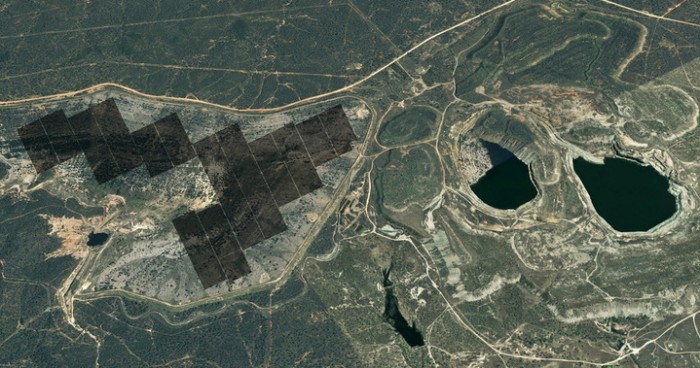What Do You Do When a Gold Mine Runs Out? Turn It into a Power Plant
In northern Queensland, Australia, two giant holes in the earth are about to be put to good use. What were the twin pits of the Kidston gold mine will soon become a place to store a tremendous amount of energy.
Hydroelectric facilities are nothing new, of course, but this one comes with a twist: water will flow from one pit downhill to the other, generating electricity in the process. When demand for electricity is low, the water will be pumped back uphill to store for later use. Even this so-called pumped hydro setup is pretty common, but the Kidston complex is unique in that it will use the same water over and over again (though it has a license to dip into a nearby dam for a top-up if needed).
Genex, the company behind the project, figures there will be enough water to generate 300 megawatts of power for seven hours at a stretch. The electricity for pumping will come either from the grid or from a 50-megawatt solar farm being built nearby.

A broader aim is for the Kidston facility to become a case study in how to store energy from wind or solar farms to help smooth out energy supply to the grid when the wind isn’t blowing or the sun isn’t shining.
The question of how to store large quantities of renewable energy is one that dogs renewables and limits the degree to which they can replace fossil fuels. The persistence of the problem has led to solutions ranging from simply building really big batteries to pumping underground caverns full of air to pushing a train full of rocks uphill.
But pumped hydro, a far more mature technology, accounts for 99 percent of the world’s large-scale energy storage, according to the Guardian. That usually involves a big assist from Mother Nature in the form of a nearby river supplying an endless source of water. But if the Kidston facility works as planned, it may be a powerful new way to bank renewable energy.
(Read more: The Guardian, GreenTechMedia, “Race for a New Grid Battery Hits a Speed Bump,” "Innovator Under 35: Danielle Fong, 24")
Keep Reading
Most Popular
Large language models can do jaw-dropping things. But nobody knows exactly why.
And that's a problem. Figuring it out is one of the biggest scientific puzzles of our time and a crucial step towards controlling more powerful future models.
The problem with plug-in hybrids? Their drivers.
Plug-in hybrids are often sold as a transition to EVs, but new data from Europe shows we’re still underestimating the emissions they produce.
Google DeepMind’s new generative model makes Super Mario–like games from scratch
Genie learns how to control games by watching hours and hours of video. It could help train next-gen robots too.
How scientists traced a mysterious covid case back to six toilets
When wastewater surveillance turns into a hunt for a single infected individual, the ethics get tricky.
Stay connected
Get the latest updates from
MIT Technology Review
Discover special offers, top stories, upcoming events, and more.